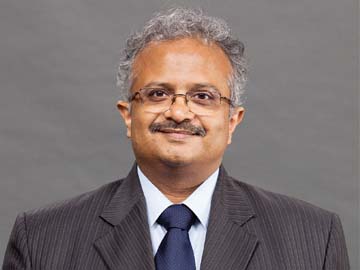
A lab-grown lesson in Innovation
Many worthy ideas never see the light of day or are left unexpressed for fear of ridicule. Enterprises need to nurture these in an enabling environment and like the burger scientists, watch the innovation happen
One food critic pronounced it “not that juicy” and another pointed to its lack of fat. The commercialization price tag upward of $10 million, and 20-year time to market, is keeping investors at bay, and maybe even in splits. It’s entirely possible that consumer groups will vilify it as franken-food or simply reject it as “yuck”. But there are many reasons why the world’s first lab-grown hamburger – declared by a global online innovation think tank as the top innovation of 2013 – is a metaphor for innovation of the highest order.
And this is why this small, horrendously expensive piece of meat packs a rich lesson in innovation. For, what is true innovation if not the chutzpah to persist with an audacious idea amidst stiff opposition? The farsightedness to apply known knowledge to new frontiers. The thinking that an industry’s commercial success should also work for the greater good.
I believe that today’s innovation needs to revisit these core principles. Too often, we see enterprises being fettered by fear of failure, or driven only by the lure of commercial success. Others venture as far as step-up innovation, to do things that have already been done before. Even disruptive innovation, about which so much has been said, is largely guided by narrow motivations of cost and gain.
I am not for a moment suggesting that enterprises innovate in a vacuum, with no thought of reward; only that it cannot be the sole yardstick of merit. Also, enterprises need to temper their impatience to see quick wins. Many worthy ideas never see the light of day or are left unexpressed for fear of ridicule. Enterprises need to nurture these in an enabling environment and like the burger scientists, watch the innovation happen. One of the most important requisites of an enabling organizational environment is that it must be free of the fear of judgment.
This will assume critical significance in the coming years. As the digital generation gets ready to join the workforce, many in their ranks will bring to the enterprise an innovative spirit and a disruptive idea. The organization must allow their latent talent to surface, before it is buried under the weight of corporate policy, precedent, hierarchy or fear. They can do this by creating an environment that accommodates experimentation, even the odd outlandish idea. They must value cold rationale, but also self-belief. And they must at an organizational level believe that sometimes making a statement is more important than making a buck. As Professor Mark Post, the brain behind the lab-burger said in response to the question of when it would hit the shelves, "I think it will take a while. This is just to show we can do it."
(Sanjay Purohit is Senior Vice President, Global Head, Products, Platforms and Solutions at Infosys)
-
 Sharath Nair
Sharath NairThought provoking.. I might just test your resolve on the matter and bring an idea to your office :)
on May 16, 2014 -
 Shefali Raj
Shefali RajWell worded! Mr.Purohit. It's all a matter of self belief that brings out even the most outlandish idea in the open. So what if it fails, you never know how beads of thoughts become a string one day. I like social platforms that encourage free exchange and sharing of ideas. Ultimately , innovations happen for the good of mankind. Innovations may happen by someone after picking lead from somebody who left it incomplete. Conducive mind is important. Yes, organisations must encourage free flowing ideas . As you rightly said .... Least you can do is ,Be Judgemental.
on May 4, 2014 -
 Shalini
ShaliniInteresting read. Yes , Innovation needs to be nurtured and can be done by organizations who have foresight..
on Apr 28, 2014 -
 Srikanth
SrikanthGood thoughts, Sanjay, though I\'m not sure such blue-sky, no holds-barred innovation can happen in organizations that are ultimately accountable to shareholders. Even the most innovative companies create breakthroughs that deliver customer- and therefore shareholder- value. Perhaps a better model is for organizations to support pure think-tanks and research organizations who have no profit motive, but are free to pursue scientific research only for the sake of growing human knowledge. TIFR is an excellent example. As you\'ve noted, the challenge for industry is to be able to support this at scale with no guarantees of short-term returns.
on Apr 25, 2014















